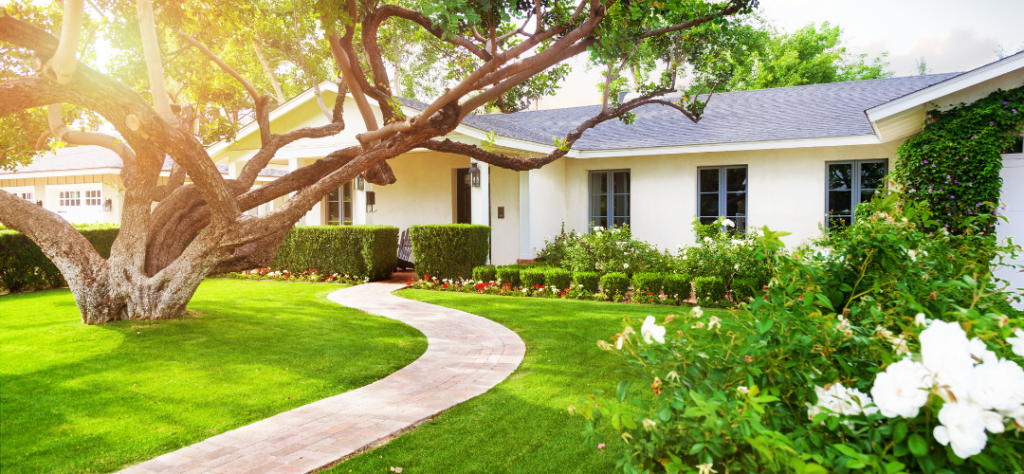Grass Seed Germination: Anatomy, Process, and Influential Factors
Understanding the germination of grass seeds is paramount for a successful lawn establishment. Mastery of this process is vital for troubleshooting and problem-solving. Knowing the intricacies empowers individuals to make informed seed selection choices, laying the foundation for lush, vibrant lawns. Delving into the details of grass seed germination reveals the critical factors influencing growth, such as soil temperature, moisture levels, and seed viability. This knowledge enables proactive measures to optimize conditions, ensuring optimal germination rates and robust turf development. In essence, grasping the nuances of grass seed germination is fundamental to cultivating and maintaining a thriving, resilient lawn landscape.
Seed Anatomy and Germination Roles
Seed Coat
The protective outer layer of the grass seed shields the embryo from physical damage and pathogens while allowing gas exchange during germination. Its crucial role in this process involves safeguarding the delicate grass seed embryo from environmental stressors and regulating water absorption to prevent premature germination. Serving as a barrier to pathogens ensures grass seed viability. This outer layer acts as a guardian, ensuring the embryo's safety and providing the necessary conditions for successful germination of grass seed. Its intricate functions contribute significantly to the seed's ability to thrive and establish robust plant growth, crucial for the continuity of plant species and ecosystems.
Endosperm
The nutrient-rich tissue surrounding the grass seed embryo plays a pivotal role in grass seed germination. It provides essential energy and nutrients crucial for initial growth, serving as a food reserve until the seedling can photosynthesize. During germination, this tissue supplies vital proteins, carbohydrates, and vitamins, fueling the seedling's development. Its presence ensures the survival of the grass seedling until it establishes its own root system, contributing significantly to successful grass seed germination. This nutrient reservoir acts as a lifeline, nurturing the seedling through its early stages and fostering robust growth, ultimately laying the foundation for a healthy and vibrant grass lawn.
Embryo
The tiny, undeveloped plant within the grass seed, known as the embryo, holds the future roots, stem, and leaves of the plant, crucial for initiating germination for grass seed. Its role in this process is paramount: it triggers germination in response to favorable conditions, develops into the seedling's root system, anchoring it in the soil, and produces the first shoots and leaves, kickstarting photosynthesis. This embryonic plant acts as a catalyst for life, driving the transformation from dormant grass seeds to flourishing seedlings. Its development marks the beginning of a new plant's journey, ensuring its survival and eventual establishment in its environment.
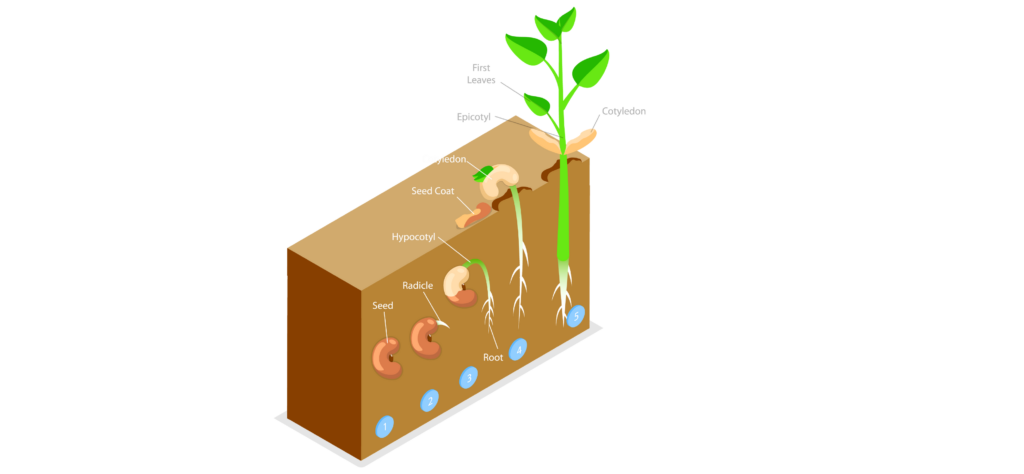
Grass Seed Germination Process
Grass seed germination time for most varieties typically ranges from 10-14 days. The duration may vary due to factors such as species, environmental conditions, and seed quality. Ensuring adequate moisture, soil temperature, and proper seed-to-soil contact are crucial for optimal germination and establishment of grass seeds.
1. Imbibition
Imbibition marks the crucial initial phase of grass germination. Through the micropyle, a small pore in the seed coat, water is absorbed, causing the seed to swell and soften. This process triggers enzyme activation and metabolic activity, initiating grass germination. Typically occurring within hours of hydration, imbibition sets the stage for successful **grass germination**, vital for the establishment of healthy and vibrant turf. Understanding this process underscores the significance of water uptake in initiating the growth of grass seeds, facilitating their transition from dormancy to active growth.
Will Grass Seed Germinate on Top of Soil
While grass seed germination can occur on the soil surface, achieving optimal results often demands good seed-to-soil contact. Techniques like lightly raking the soil surface aid seed settlement, while covering seeds with a thin layer of soil or mulch retain moisture and shields against pests. Providing suitable conditions enhances grass seed germination, fostering healthy turf growth. Understanding the significance of seed-to-soil contact and employing effective techniques are essential for successful grass seed germination, establishing the foundation for lush and vibrant lawns.
2. Activation of Enzymes
During the germination of grass seeds, enzymes like amylase and protease break down stored complex molecules, such as starch and proteins, into simpler forms. These compounds provide energy and nutrients essential for the growth and development of the emerging seedling. Enzymes also activate biochemical pathways regulating cell division, elongation, and differentiation in the growing embryo. This enzymatic activity typically begins shortly after imbibition, occurring within a day or two. Understanding the significance of enzyme action elucidates the intricate biochemical processes driving the germination of grass seeds, crucial for establishing healthy and vibrant turf.
3. Radicle Emergence
During grass seed germination, the radicle, or embryonic root, emerges from the seed and grows downward into the soil. It penetrates the seed coat, absorbing water and minerals, essential for the developing seedling. Anchoring the seedling and establishing the primary root system, the radicle supports the plant's growth and development. This process typically unfolds within 1-3 days of grass seed germination, marking a pivotal stage in the seedling establishment. Understanding the significance of radicle emergence sheds light on the early root development crucial for the successful growth of grass, ensuring its ability to access vital nutrients and anchor securely in the soil.
4. Shoot Emergence
Following radicle emergence during grass seed germination, the shoot system of the seedling emerges from the grass seed. It comprises the embryonic stem, elongating upward, and the first leaves, or cotyledons, unfolding and expanding. The shoot grows toward the surface, guided by gravity and light cues, seeking sunlight for photosynthesis. This phase occurs after radicle establishment and varies based on species and environmental factors. Understanding the sequence of events during **grass seed germination** illuminates the early stages of seedling development, crucial for the establishment of healthy turf and the optimization of growth in diverse environmental conditions.
5. Seedling Growth
Upon shoot emergence, the grass seedling enters a phase of rapid growth and development, a critical period in grass germination. Roots elongate and branch, exploring the soil for water and nutrients, ensuring stability for the growing plant. Simultaneously, the shoot system expands, generating more leaves and stems, augmenting the plant's photosynthetic capacity and biomass. This phase, occurring within the grass germination period, underscores the importance of root and shoot development in establishing healthy turf. Understanding these processes is vital for optimizing grass germination and facilitating robust growth, essential for a lush and vibrant lawn.
6. Establishment
As the seedling matures, it establishes a more extensive root system and develops into a young plant, marking an essential phase in the grass seed germination timeline. The young plant has become increasingly self-sufficient, relying less on stored reserves from the seed. Continued care and maintenance, including watering, fertilization, and weed control, are essential to support the seedling's healthy growth and establishment into a mature lawn or turfgrass stand. Note: Timelines may vary depending on the species of grass and environmental conditions such as temperature and moisture levels. Understanding these variations is crucial for a successful lawn establishment.
How to Speed up Grass Seed Germination
Ensuring optimal conditions are paramount for successful grass seed germination. These tips will help you ensure that your seed germination is optimized for colder temperatures.
Soil Moisture & Temperature:
Maintaining soil moisture levels is crucial; the soil should remain consistently moist but not waterlogged to support seed imbibition and enzyme activation. Temperature control is equally important, with the soil ideally falling within the range of 60°F to 75°F (15°C to 24°C) for the specific grass species being seeded. Light exposure also plays a role; while some seeds benefit from light, others germinate more efficiently in darkness. Adjusting light conditions accordingly optimizes germination rates.
Cold Stratification:
Cold stratification mimics natural conditions by storing seeds in a cool environment for a designated period, effectively breaking dormancy. This method is particularly beneficial for certain grass species and accelerates germination when seeds are subsequently planted in warmer conditions.
Proper Planting & Soil Preparation:
Proper planting preparation is essential. Adequate soil preparation involves loosening the top layer, removing debris, and creating a suitable seedbed. Ensuring proper seed-to-soil contact is critical for optimizing nutrient availability and promoting quicker germination and seedling establishment. Scarification, achieved by breaking or scratching the seed coat, facilitates water absorption and can be done using sandpaper, a file, or warm water soaking.
Soil Aeration & Seed Priming:
Improving soil aeration by gently raking or loosening the topsoil enhances conditions for grass seed germination. Overseeding increases seed density for better coverage, while seed priming treatments enhance germination capacity. Treating seeds with priming agents or solutions and pre-soaking them in nutrient-rich solutions improves germination rates and seedling vigor, contributing to successful establishment. By following these practices, gardeners and landscapers can optimize grass seed germination and ensure healthy turf growth.
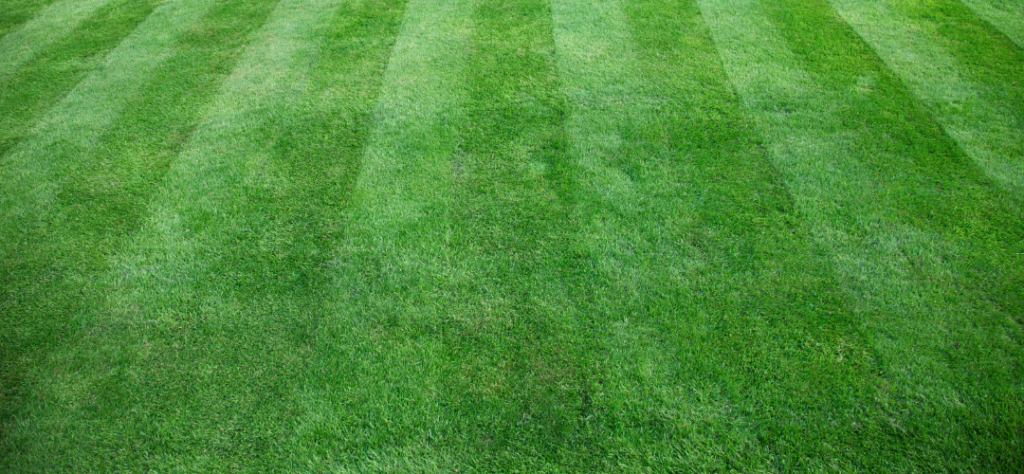
How to Pre Germinate Grass Seed
Many factors influence seed germination and health. Often grass seed temperature germination plays a large role in the success of your growth.
Soaking Seeds:
Soaking grass seeds in lukewarm water for 12 to 24 hours is a beneficial pre-germination step. This process softens the seed coat and initiates the imbibition process, aiding in water absorption and kickstarting germination.
Draining Excess Water:
After soaking, it's essential to drain the seeds using a fine sieve or mesh strainer to remove excess water. This step helps prevent the seeds from rotting and ensures optimal conditions for germination.
Preparing Germination Medium:
Spread moist paper towels, cheesecloth, or peat moss in a shallow container to create a suitable germination medium. It's crucial to ensure that the medium is damp but not waterlogged to provide the right environment for seed germination.
Spreading Seeds:
Evenly distribute the pre-soaked grass seeds over the moist medium, avoiding overcrowding to prevent competition for resources. This ensures that each seed has adequate space and access to moisture for germination.
Maintaining Moisture:
Cover the seeds with another layer of moist medium to retain moisture effectively. Place the germination tray in a warm, well-lit area, away from direct sunlight to prevent drying out while maintaining optimal conditions for germination.
Regular Monitoring and Watering:
Check the germination medium daily to maintain moisture levels, ensuring that it remains damp but not waterlogged. Avoid overwatering, as this can lead to fungal growth and seed rot. If necessary, use a spray bottle for misting to supplement moisture.
Observing Germination Progress:
Within days of seeding, observe signs of germination such as radicle (root) and shoot emergence. Once the majority of seeds have sprouted, they are ready for planting in the desired location, ensuring a successful transition from germination to establishment. Regular monitoring and referencing the grass seed germination temperature chart throughout the germination process contribute to healthy seedling development and eventual successful establishment of grass.
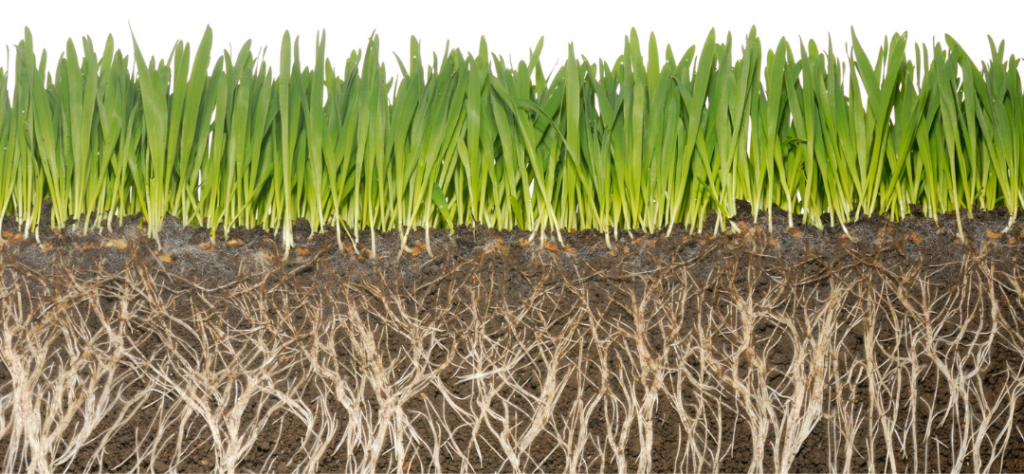
Factors Influencing Each Stage of Germination
Many factors go into healthy grass and overall sustainment of lawn health. In addition, these factors have the same influence through the germination process. The road to your perfect lawn can look very different depending on the ecosystem provided. From the amount of light to the bodies of water near by, these factors can shift your process.
Grass seed germination is influenced significantly by temperature, making it a critical factor in successful germination. Optimal temperature ranges vary among grass species, and a grass seed germination temperature chart can be a valuable tool for understanding these requirements. Generally, temperatures between 60°F to 75°F (15°C to 24°C) are considered ideal for most grass species. However, extremes in temperature can inhibit enzyme activity and metabolic processes essential for germination. Fluctuations in temperature further complicate the germination process, potentially disrupting it altogether.
In addition to temperature, moisture levels play a crucial role in grass seed germination. Consistent moisture is necessary for imbibition, enzyme activation, and metabolic processes. Conversely, insufficient moisture can prevent seed swelling and halt germination, while excessive moisture can lead to fungal diseases and seed rot.
Oxygen availability is essential during germination, as it supports cellular respiration. Soil compaction can limit oxygen diffusion to seeds, delaying germination. Adequate soil aeration is thus vital to promote oxygen diffusion and support the germination process.
Light also influences grass seed germination, particularly for photoblastic seeds that require light to germinate. Exposure to light triggers hormone production, signaling the seed to initiate germination. The depth of burial affects light availability, impacting germination rates accordingly.
Moreover, seed coat permeability plays a crucial role in water uptake rates. The thickness of the seed coat varies among grass species, affecting germination. Scarification techniques can enhance seed coat permeability, facilitating water absorption and promoting germination. However, physical damage or decay of the seed coat can compromise seed viability, hindering germination success.
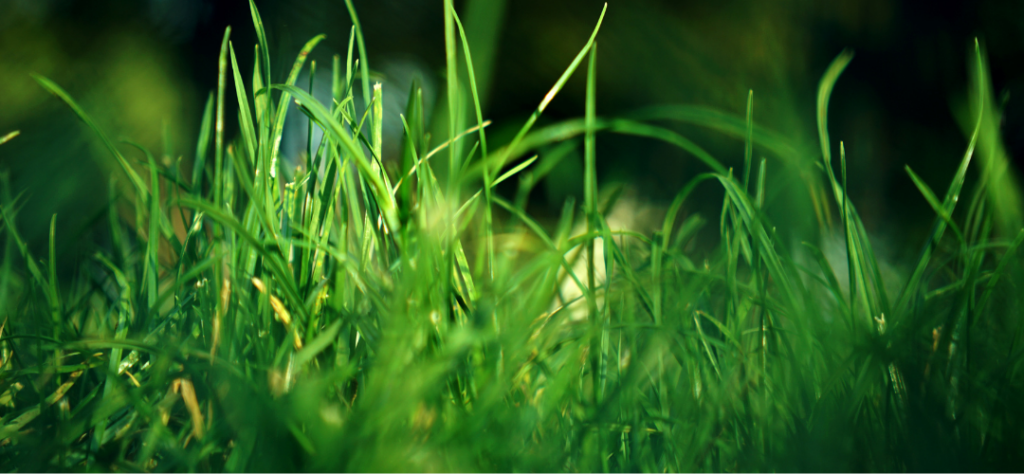
Challenges and Solutions in Grass Seed Germination
Inconsistent Moisture Levels:
Regularly monitor soil moisture and adjust watering schedules accordingly to prevent fluctuations that can hinder grass seed germination. Consider installing irrigation systems or applying mulch to ensure consistent moisture levels, promoting optimal conditions for the grass seed germination process.
Seed Dormancy:
Utilize scarification and stratification techniques to effectively break seed dormancy. Extend the germination period by providing consistent care, ensuring that seeds have ample time and conditions to sprout and establish into healthy seedlings.
Soil Compaction:
Address soil compaction issues by aerating the soil to improve oxygen penetration and promote better root development. Incorporating organic matter into the soil enhances soil structure, creating an environment conducive to grass seed germination and overall lawn health.
Pest and Disease Pressure:
Implement sanitation and pest management practices to mitigate pest and disease pressure, safeguarding grass seed germination and subsequent growth. Choose disease-resistant grass varieties and apply fungicides as needed to protect emerging seedlings.
Environmental Stressors:
Protect newly seeded areas from environmental stressors such as extreme weather by providing shade or cover when necessary. Mulch the soil to conserve moisture and regulate temperature, creating favorable conditions for grass seed germination.
Weed Competition:
Implement effective weed control measures to minimize competition with emerging grass seedlings. Maintain proper lawn care practices such as regular mowing and fertilization to discourage weed growth and promote the healthy establishment of newly germinated grass seeds. By addressing these common lawn care challenges, you can optimize conditions for grass seed germination and foster the development of a lush, vibrant lawn.
Modernizing Grass Seed Germination: Hydroseeding Revolution
Hydroseeding presents an innovative alternative to traditional seeding methods, addressing the challenges and hassles associated with conventional grass seed germination techniques. It offers a more efficient and effective way to establish healthy lawns and landscapes with a shorter grass seed germination timeline.
Advantages Over Traditional Methods:
Hydroseeding promotes rapid and uniform spread for grass seeds to germinate, eliminating the frustration of patchy or slow growth common with traditional methods. Additionally, it effectively controls soil erosion, reducing the risk of washouts and the need for extensive erosion control measures. Moreover, hydroseeding proves to be cost-effective, saving both time and money by streamlining the seeding process and minimizing labor and material costs compared to traditional methods.
Considering its numerous benefits, hydroseeding cost is affordable and an effective solution for achieving successful grass seed germination and establishing vibrant lawns and landscapes.
Final Words
In conclusion, grasping the intricacies of factors for grass seed to germinate is fundamental for cultivating a flourishing lawn. Proficiency in seed anatomy and the germination process facilitates effective troubleshooting. Considering factors such as temperature, moisture, and light greatly impacts germination outcomes. By employing appropriate techniques, challenges like seed dormancy and soil compaction can be overcome. Embracing modern methods like hydroseeding provides efficient alternatives for establishing lawns with success. With this knowledge and approach, homeowners can navigate the journe


